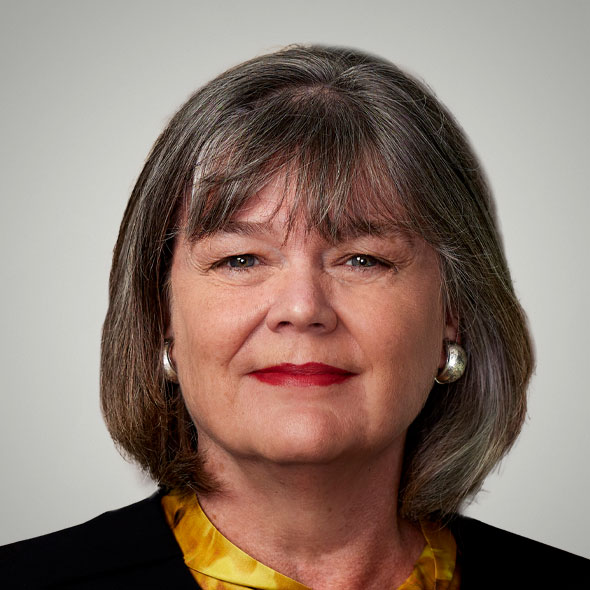A new regulator performance framework and financial oversight authority challenge us to reflect on what makes for good practice, writes Professor Pamela Hanrahan.
What makes a good regulator? During 2021, the Commonwealth quietly completed two pieces of work touching on this question. The first was the rollout of the new Regulator Performance Framework (RPF) in July, covering more than 100 federal regulatory agencies and departments exercising regulatory functions. The second — covering the Australian Securities and Investments Commission (ASIC) and Australian Prudential Regulation Authority (APRA) only — was the establishment of the Financial Regulator Assessment Authority (FRAA), which appointed its inaugural members in September. Both initiatives aim for better- performing business regulators. But neither really answers the questions of how to define regulatory excellence or how to build the governance systems within and around regulatory agencies to achieve it.
Successful regulation — in any domain — depends on three things. First, the regulator must have the right laws to administer. This is squarely a matter for government. Second, the regulator must have the right resources to carry out its functions, recognising that those functions differ between agencies. Third, it must have the right framework for governance and accountability. This includes maintaining the appropriate level of independence from the entities it regulates and the political administration of the day.
The RPF and the FRAA are both directed at improved governance and accountability. They sit alongside the Public Governance, Performance, and Accountability Act 2013 (Cth) under which all Commonwealth agencies operate.
The new RPF is a project of the Department of Prime Minister and Cabinet. It replaces the 2014 framework with “refreshed expectations for regulator performance and reporting”. The new arrangements “move to a more outcomes-focused and principles-based approach” to regulatory effectiveness. Its Regulator Performance Guide, published in July, sets out three “core principles” for regulators, expressed as “continuous improvement and building trust; risk-based and data-driven; and collaboration and engagement”. All worthwhile — if somewhat anodyne — goals for any organisation.
Financial Regulator Assessment Authority
The three board members were appointed in September 2021 for a five-year term:
Nicholas Moore (chair) — chair Smith Family, Screen Australia, former CEO Macquarie Group
Gina Cass-Gottlieb — partner Gilbert + Tobin Lawyers, member RBA Payments System Board
Craig Drummond — president Geelong Football Club, non-executive director Transurban, former CEO Medibank Private
Performance and independence
There are two other important parts to the RPF — statements of expectations and intent (SEIs), and performance assessment. SEIs were recommended in John Uhrig’s landmark 2004 report on the governance of statutory authorities. They are letters exchanged between responsible ministers and their agency heads, which set out “the Australian government’s policy and priorities for a particular regulator’s performance and operations” and the agency’s commitments in response. They are high-level documents, as the letters exchanged between ASIC chair Joe Longo and Treasurer Frydenberg in August illustrate.
The government’s renewed interest in SEIs may reflect its evident frustration with regulators that freelance in what government considers matters of policy (such as climate change) or fail to get on board with its “economic goals”.
But regulatory agencies are set up to operate independently for a reason. Agencies should have the ability to move quickly to respond to issues in markets as they emerge. They need the political backing to get on with the job, with the overarching policy parameters set by government. There may be some tension between this and the SEI instruction to ASIC that it should “consult with the government and Treasury in exercising its policy-related functions, such as the use of its exemption and modification powers, other rule-making powers, and guidance”.
The other important change in the RPF concerns performance assessment. The refreshed framework removes the former requirement for “external validation of a regulator’s performance assessment”. Regulators “are instead required to engage in a two-way dialogue with stakeholders on performance on an ongoing basis and reflect this feedback in performance reporting” which is integrated into their PGPA reporting.
Stakeholder voices
Of course, it matters which stakeholder voices are heard. They should not be confined to regulated entities or their lobbyists. In the final report of the banking Royal Commission, Commissioner Kenneth Hayne AC QC observed that regulated entities “are not ASIC’s ‘clients’. ASIC does not perform its functions as a service to those entities”. User-pays funding models might lead some entities to conclude otherwise. But regulators exist to administer and enforce laws made for the benefit and protection of the community. Thinking about regulator performance in this way challenges us to respond from what the philosopher John Rawls called the “original position” — where we don’t know whether we are the service provider, customer or bystander. That is a big ask.
The FRAA sits outside the RPF and is the responsibility of the Treasurer. The regulatory failures that enabled the unlawful and unethical practices in the financial sector led Commissioner Hayne to recommend a permanent oversight body for ASIC and APRA.
He found that none of the existing processes — including parliamentary scrutiny — required “regular and systematic review of how well either regulator discharges its statutory functions or exercises its statutory powers”. The FRAA was to be an independent body, given the job of assessing “the effectiveness of each regulator in discharging its functions and meeting its statutory objects; the performance of the leaders and decision-makers within the regulator; and how the regulator exercises its statutory powers”.
The statutory functions eventually conferred on the FRAA by the Treasurer are to assess and report on each agency’s “effectiveness and capability” biennially, beginning with ASIC in 2022. This does not extend to examining either agency’s handling of individual cases, or to the kind of real-time engagement an independent board would provide.
The appointment of the inaugural members of the FRAA — chair Nicholas Moore, Gina Cass-Gottlieb and Craig Drummond — gives Longo another set of relationships to manage. This adds to ASIC’s already curious governance structure — made more curious by the statement in the recent SEI that its commission will act as “a strategic non-executive body focusing on high-level regulatory and statutory decision-making and stakeholder management”.
What makes for a good regulator?
In designing their assessment, the FRAA members will have to grapple with the same question we started with — what makes for a good regulator? That will require hard thinking about outcomes, not just outputs.
For other Commonwealth agencies, including the Australian Competition and Consumer Commission, Australian Charities and Not- for-profits Commission, Office of the Registrar of Indigenous Corporations, and Australian Transaction Reports and Analysis Centre, the RPF pushes that task back onto the rest of us. The Regulator Performance Guide states: “The guide does not impose a requirement for regulators to validate performance reporting with stakeholders, as was included under the 2014 Regulator Performance Framework. There is an expectation that this annual requirement is superseded by more regular, meaningful dialogue with relevant stakeholders on both the development of and reporting against performance measures”.
It is vital that regulators are accountable to the community they serve. This includes being efficient, responsive, pragmatic and outwardly focused. It also includes avoiding capture, resisting the siren song of the “pub test”, and eschewing the easy targets or soft deals in enforcement. Regulators must make the best of the laws that are given to them, including by legislators who don’t always understand the bigger picture. Working constructively with regulated entities is essential, but as Commissioner Hayne said, they are not their clients.
So, the new RPF gives us (and the FRAA members) our homework for the summer. We need to decide what makes for a good regulator. Hopefully, we will all have the wisdom to do so from Rawls’ original position.
Latest news
Already a member?
Login to view this content



